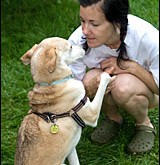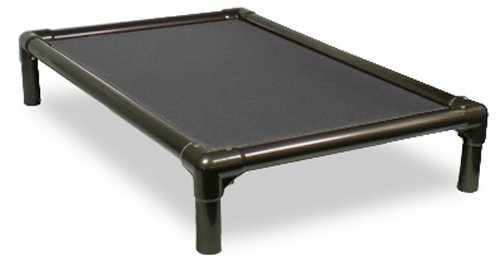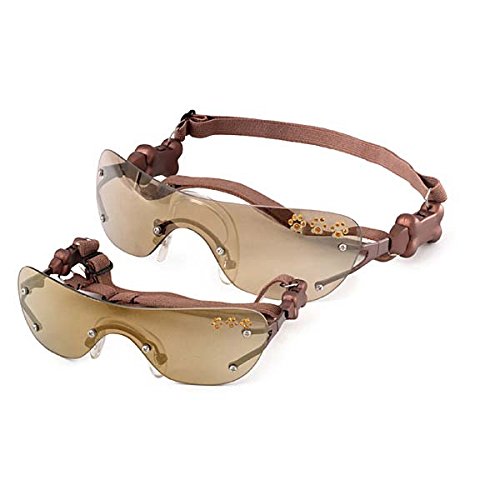Believe it or not, Border Collie dog speak (and any breed for that matter) is really barked to mean something.
Dogs are capable of communicating through a variety of noise and sounds, all of which are useful for getting along with their human or canine group. Even if we the owners of the dogs figure out what they are saying, we often mix up what the dog is trying to say. So sounds of alarm are mistaken for anxiety attacks, simple call for something or this and that come across as nuisance noises. Thus humans are also capable of turning into big things what started out as small. Let's go over some of these vocalizations to understand better these furry citizens.
Barking
Barking is the common reaction of a dog to announce the entry of a strange someone or something into the owner's space; a bark can also be a request for play; indication of distress; a simple hello; a way to get oneself noticed; or tell an approaching anyone or anything to back off and keep away. Barks shift in meaning according to each call's tone, volume and length, among other factors. An owner who knows inside and out his or her dog can differentiate each and every bark, howl, woof, and growl.
Dogs with hearty barking must have made an impression on ancient groups of people, because it seems early breeders actually planned how to develop and encourage barking in some breeds. Now the world over knows that the Norwegian Elkhound used its bark to lead its hunter-owner to the game being pursued; livestock guard dogs, like the popular Border Collie, to inform shepherds about intruders and to sternly keep trespassers away from the flock; palace guard dogs, to announce any invaders and prowlers; hounds and terriers, to keep the accompanying group close by as they go after the quarry.
Chewing
A dog chewing, ripping things apart and shredding looks like it is on a senseless mission of destruction. But behind it is the simple reason that your dog has resorted to entertaining itself, due to a simple loss of anything to do. And of course it's something that needs immediate attention (although it's no use punishing the dog for something that for it is perfectly explainable anyway).
To start remedying this negative behavior, give your dog lots of things to chew and play with to keep it busy when you are not at home to be with them. And just to be safe rather than sorry, try to keep your dog in a living space where there are no other things to chew but their toys.
To end, the simple key to this issue is really to keep your dog occupied with more productive stuff. In any case though, it's normal to hear about a dog that is into some amount of chewing and shredding. But they sure do need corrected for their mistakes.
Digging
Dogs dig for a variety of known reasons, such as boredom, want of a cooler shade, or just because of their personality. Here are some tips for dealing with your tireless earthmover.
As always toys are a very good way to keep dogs occupied and off your lawn-- if not the neighbor's lawn. Give them something exciting and new regularly to keep their interest levels up and away from digging.
Another reason for that huge hole out back (with your dog lying on top of the cool soil) is that your dog is overheating after so much exercise, or the weather is simply too hot for it. Help your dog to stay cooler by keeping them in an airconditioned room (the most ideal option yet), or at least in a shaded place with plenty of water.
Yet another reason why a dog may want to dig is due to a lack of physically demanding stuff to do. Border collies are again a good example, given their popularity, and at the same time awesome brains and stamina. Thus the best thing to do is to bring them out of the house for a walk or to play with them.
If all else fails, you may want to simply allow the dog to have its own digging place of sorts in the backyard, like a small plot of the earth itself, a sand box or anywhere out the way. Show them it is alright to dig in the selected area by putting them there before they can start digging elsewhere.
As a safety precaution, you may also want to fence in areas that must not be entered by your dog, such as flower beds and well manicured lawns.
Good luck in border collie training and other dog training programs!

 Dog Tricks – Dog Training Level 1
Dog Tricks – Dog Training Le
Dog Tricks – Dog Training Level 1
Dog Tricks – Dog Training Le
 How To Get Rid Of Ticks on Dogs Using Safe and Cheap Alternatives to Frontline Flea and Tick Control
Estimated reading time &ndas
How To Get Rid Of Ticks on Dogs Using Safe and Cheap Alternatives to Frontline Flea and Tick Control
Estimated reading time &ndas
 Top Seven Dog Treats - A list of the best, most healthy dog treats available
Top Seven Dog Treats
It抯 easy to go to your local pet super
Top Seven Dog Treats - A list of the best, most healthy dog treats available
Top Seven Dog Treats
It抯 easy to go to your local pet super
 6 Things Your Dog Needs You to Know About Glaucoma in Dogs
We think of Glaucoma as a pe
6 Things Your Dog Needs You to Know About Glaucoma in Dogs
We think of Glaucoma as a pe
 Through A Dogs Ear: Sound Therapy For You And Your Dog
Todays Hectic LifestyleIn th
Through A Dogs Ear: Sound Therapy For You And Your Dog
Todays Hectic LifestyleIn th